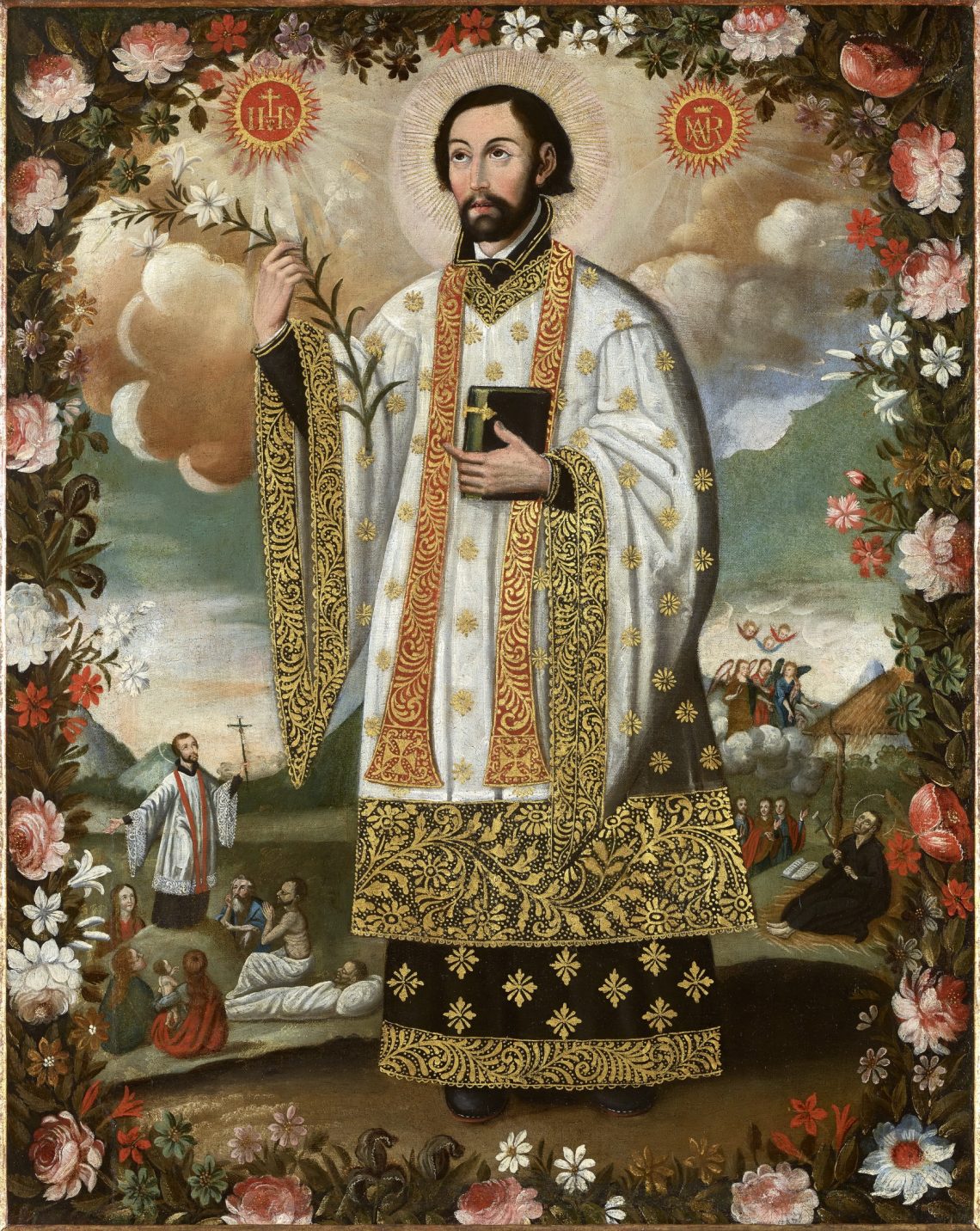
Acquisition Highlight: St. Francis Xavier
| January 30, 2017 | |
| Art of the Spanish Americas |
Born in Spain in 1506 to a noble Basque family, Francis Xavier was a companion of Ignatius of Loyola, and a co-founder of the Society of Jesus, a religious order better known as the Jesuits. The two men met while studying at the University of Paris, and in 1540 the order was officially approved by Pope Paul III. In 1540, Francis became the first Jesuit missionary when he was sent to the East Indies, the first of series of missions in the far east. Based in Goa, the capital of Portuguese India, Francis travelled widely through southern India, Ceylon (Sri Lanka) and Japan, where he baptized thousands and earned a reputation for working miracles. He died in 1552 while traveling to China, and was canonized in 1622 by Pope Gregory XV.
This painting depicts Francis holding a lily, one of his attributes, a symbol used to help identify a saint in an image. Francis is frequently depicted performing miracles of healing, like the scene on the bottom at the left of the painting. There he is seen raising a man from the dead in an episode that intentionally calls to mind the story of the Raising of Lazarus, a common trope in the lives of medieval and early modern saints. In the lower right, a parallel scene shows Francis clutching a crucifix at the moment of his own death.
Before any artwork from the Spanish colonial period is considered for acquisition, the Foundation conducts extensive research into the provenance of the work. Artworks from the Spanish colonial period from South America are protected by the 1970 UNESCO Cultural Property Convention, an international agreement dedicated to fighting illicit trafficking of cultural property. This painting of St. Francis Xavier came to the Foundation from the collection of acclaimed Colombian harpsichordist Rafael Puyana.
